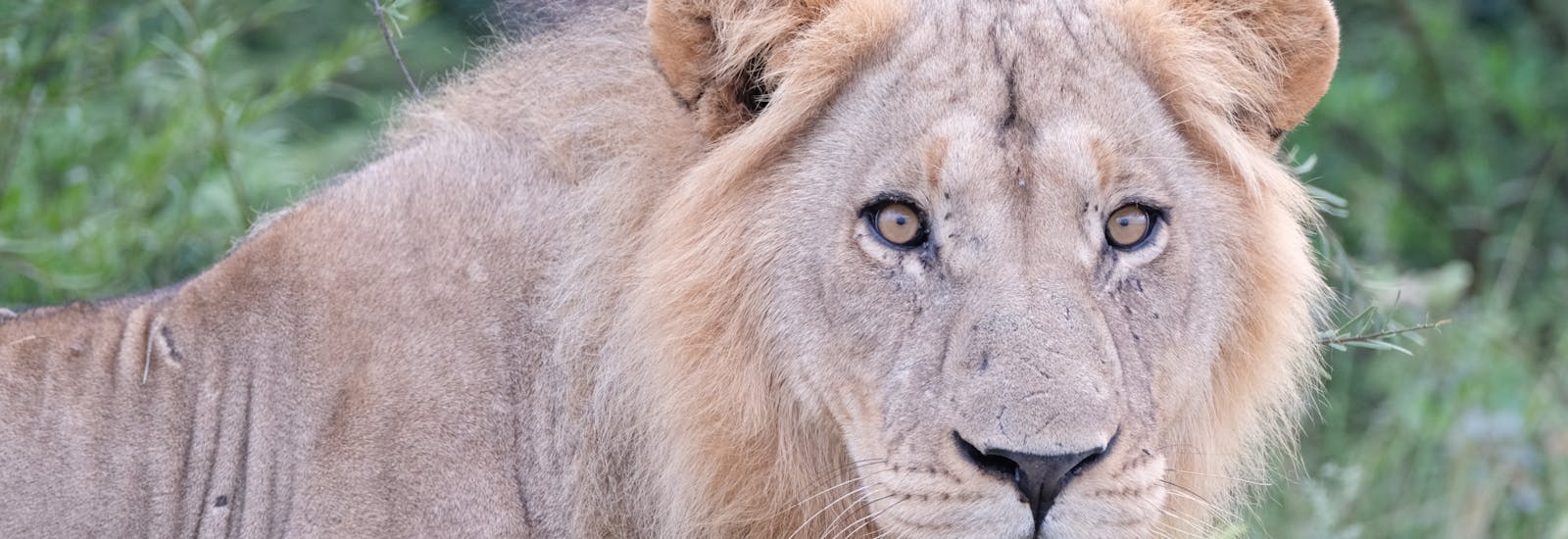
The legacy of Cecil the lion
Should “charismatic” wildlife species have UNESCO World Heritage status?
It has been almost ten months since Cecil the Lion was shot by a trophy hunter in Zimbabwe. Yet, despite the usual pattern of short-lived news and even shorter attention spans seen in social media, Cecil’s legacy is enduring. A quick social media scan of hashtags like #JusticeForCecil and #CecilTheLion shows that conversations and tempers are still hot.
The social media storm set in motion by Cecil’s demise has caught the attention of conservationists, activists, and scientists alike, and they are seizing the opportunity to create widespread awareness and secure funding and support for conservation.
In death, Cecil has become a “poster boy” for anti-trophy-hunting protests. While in the prime of his life, he was the object of a scientific study by WildCRU – the Wildlife Conservation Research Unit of Oxford University. Before Cecil was shot, the study had been struggling with limited funding. However, the awareness created by his death has also resulted in an unexpected influx of donations to the unit. This has prompted Professor David Macdonald, director of WildCRU, to commission another study titled Can the Cecil Moment become the Cecil Movement to assess the potential for social media to generate the support needed to carry wider conservation initiatives.
“What we have in mind is harnessing the colossal global interest in Cecil the lion as a force for the conservation of lions, and indeed big carnivores and wildlife more generally.”
It’s a savvy move, and using social media as the main platform is decidedly 21st Century. Cynics might say that it is using the “Disney effect” – personifying animals to increase their appeal and relatability for people – and bringing them into the world of conservation.
A group of activists have taken this concept further and translated it into an online petition to establish a “UNESCO World Heritage Species” programme.
“If UNESCO deems the loss of our heritage sites and monuments as irreparable harm to our collective heritage, why not apply the same principle to our wildlife?… The loss of lions, for example, would be an irreparable harm. Imagine the world where lions are a memory!” - Initiative founder Daniela Relja, quoted in The Guardian.
The idea of recognising the value of wildlife by awarding UNESCO World Heritage status is interesting, and it is conceivable that it would help secure funding and support for the conservation efforts of the species under its protection. But the scheme as proposed about Cecil does have the flaw of awarding this status based purely on the likeability of a certain species – not its importance in the ecosystem, or the severity of the threat to its survival. It’s the “terror of the cute” taken to an official level. “Terror of the Cute” is the term by which some conservationists complain about the level of attention awarded to flagship species like Panda bears, as opposed to, the Addax. You don’t know what an Addax is? Don’t worry – neither did we without looking it up, but it proves the point. And for the record, it’s an antelope whose population in the wild numbers only about 300, which makes the Giant Panda look good at a recent estimate of 1600 individuals in the wild.
To be clear: We do not want lions to go extinct. We are not going to put up any argument that the loss of lions would not be irreparable harm. We are just putting forward the question of whether lions are more deserving of conservation efforts than other species, purely because we consider them beautiful.
The Guardian article goes on to introduce an interesting addition to the UNESCO World Heritage Species that would address this shortcoming: much like there currently is a category for “natural” and “cultural” heritage sites, there could be two categories for “Heritage Species”. A “cultural” one for those species that we have a strong association with. For example, the pandas, lions, elephants, and tigers, and an “evolutionary” one. These species would not leave a void on our TV screens or in our collective conscience, but in evolution, as distinct evolutionary traits that took millions of years to form would disappear forever – for example a platypus.
This is where the true potential of the scheme might lie. Returning to the Disney theme, this is the effect of the side-kick animals. Think Pumba in the Lion King – a warthog would not normally win the contest for “most iconic species”, but on any given game drive in South Africa there will be at least one person crying “Pumba” with delight on spotting a warthog. That is fine as it is a testament to people taking an interest in a previously rather ignored species, purely due to that species having received some extra exposure.
So what do you think? Is the amount of attention that is focused on one animal diverting attention from other conservation issues and species that need protection? Or should we embrace the wave of public outrage about Cecil the Lion to create awareness for a greater cause?

